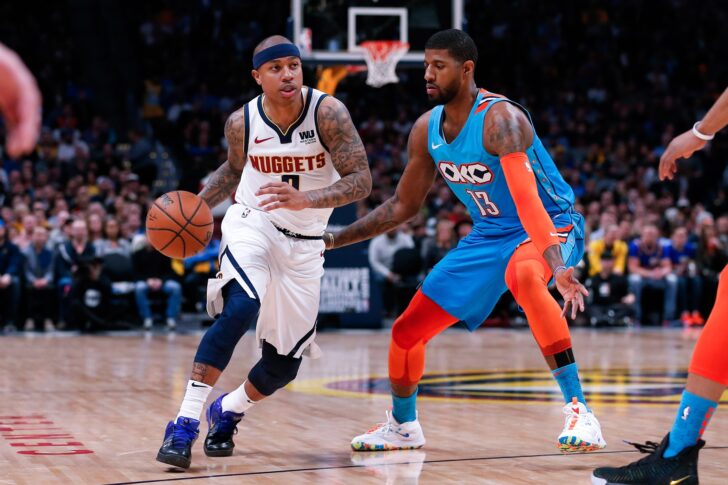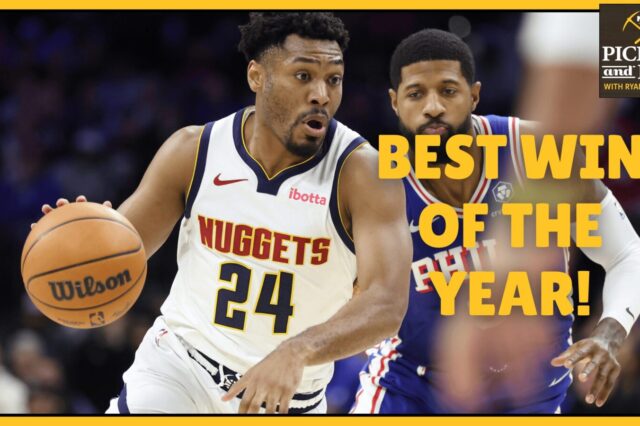The whole concept is just so appealing. It was from the very start.
There’s a reason the Tim Connelly signed Isaiah Thomas.
When Thomas was inked, back in the summer, there was very little risk. Even though Thomas headed to Denver with a nagging injury in tow, his $2 million price tag was a pittance. NBA teams spend $2 million on journeymen who never had, or never will have, what a healthy Thomas brings to the table.
There’s no denying that Thomas has the ability – the talent, the intangibles – to be a major difference maker for any team, particularly in the postseason where he’s got a history of being one of the game’s most clutch players. Any team can use that, especially one as young and playoff-inexperienced as the Denver Nuggets. And if the injury never healed? Well, so what. A couple million bucks was a worthwhile gamble.
That was the thinking in July.
Now it’s March. And Thomas is healthy. Michael Malone has eased Thomas into the rotation with limited minutes, and to be fair, mixed results.
The reward for Thomas is the same. Once any coach or GM has seen what Thomas is capable of doing, they can’t “un-see” it. The highlights of Thomas as a Celtic in the 2017 Eastern Conference Playoffs are fresh in the minds of anyone who watched. Malone won’t soon forget what Thomas did as a member of the Sacramento Kings. Even as a Nugget this season, Thomas has had flashes of brilliance – just enough to make everyone in Denver imagine the possibilities of Thomas with the ball in his hands, clock ticking down, advancing to the next round on the line.
It’s tempting; it really is.
But, while the reward remains the same, the risk has changed.
The money, which was never much of a risk anyway, is a non-issue. The risk, now, is what Thomas’ acclimation – perhaps the process of him sharpening his skills, increasing his game stamina, or simply establishing just exactly how he “fits” into the Nuggets deep and complex allocation of minutes – could cost the Nuggets.
Those enticing flashes have been, at times, overshadowed by stretches of poor play. When Thomas is running the show, the Nuggets offense can look clunky. He’s a true point guard trying to guide a team whose point guard is often its center. Besides, Monte Morris has arguably been the best backup point guard in the game this season; Thomas minutes eat into those that have been played by Morris. And on occasion, when they’re on the floor at the same time, things look out of sorts.
Thursday night, in a loss to Utah, the Nuggets won three of four quarters. They only lost the second – badly – and that just happened to be the quarter in which most of Thomas’ minutes were played. In Saturday’s loss to the Pelicans, Thomas played 16 minutes, was 5-14 from the floor – including 0-3 from beyond the arch, and he had no assists.
It’s completely unfair to pin a pair of home losses on one player – especially when that player is contributing limited minutes – but the observation that integrating Thomas back into the game and his new team hasn’t gone smoothly is more than fair.
Again, the risk with Thomas has changed. Will utilizing minutes and experimenting with rotations and personnel combinations, all in hopes of getting Thomas back to the player he can be, cost the Nuggets?
Possessions? Games? A spot in the standings? Chemistry in general?
There’s an old adage that might apply to the Nuggets and Thomas: If it ain’t broke, don’t fix it. The Nuggets, after all, became one of the NBA’s best teams without the services of Thomas.
There’s no doubt that any team with championship aspirations could greatly benefit from Isaiah Thomas, one of the NBA’s most gifted, most clutch players.
Unfortunately, it might take a little time for Thomas to reestablish himself as that player.
Can the Nuggets afford the time it might take to get him there?
The reward is so tempting. The risk, however, could be crippling.



